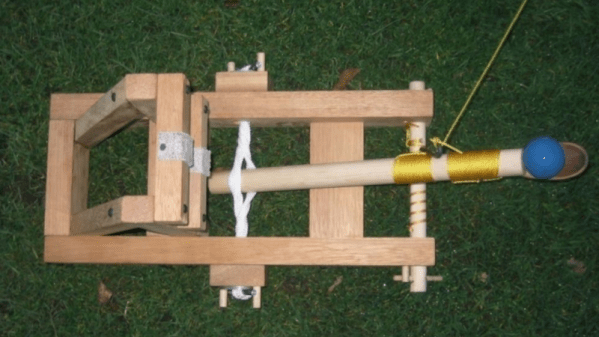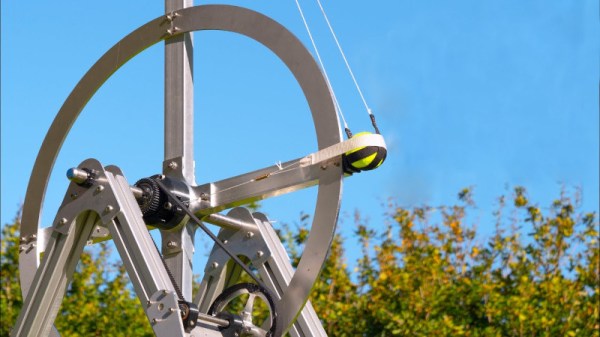If you’re of a certain age, you almost certainly learned about mangonels by playing Age of Empires II. Any intermediate player will tell you they are a powerful siege weapon that nevertheless cannot destroy trees (in game). However, why limit yourself to experiencing this capable siege engine in digital form? With the help of [Arry Koster’s] design, you can build a little mangonel of your very own!

The build is intended for a student or hobbyist audience, and is for a mangonel roughly the size of a shoebox. That’s big enough to have some fun, without being so large as to get you into trouble. The project also comes complete with a useful spreadsheet that lets you simulate the performance of a mangonel hurling a projectile so you can better understand the physics involved.
The mangonel is constructed out of wood, just as medieval examples were. The guide explains how to put the the design together, including the use of graphite to lubricate moving parts — a technique also used historically. Beyond building the siege weapon itself, there are also instructions on how to instrument it with an Arduino to measure its performance accurately.
The only thing this project is missing is a brilliant video of the titchy siege machine in action. We want to see it knocking down some appropriately-sized castles! If you happen to be building your own siege engines, miniature or otherwise, don’t hesitate to drop us a line. Do include some excellent footage of your antics, to boot!











